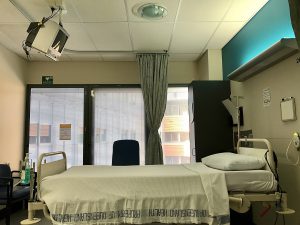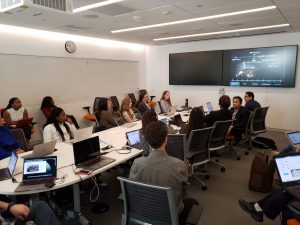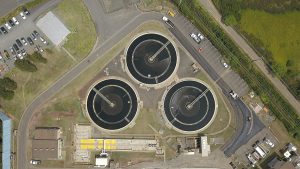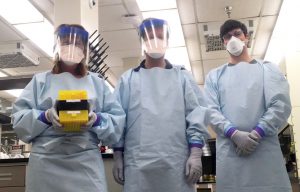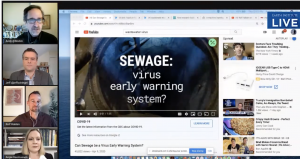More great information from Linsey Marr who has been at the forefront of some of the best science and discussions about SARS-CoV-2, especially on the risk of airborne transmission. This article isn’t a study, but a detailed description of the science of SARS-CoV-2 in built environments and specific recommendations for indoor sports centers (but could …
So here’s a bit of an odd “study”, published as a letter in the Journal of Hospital Infection about which the authors put out a press release as well. The title is “COVID-19 pandemic, let’s not forget surfaces”. No abstract since it’s a letter. Basically the authors took DNA from cauliflower mosaic virus, and inoculated …
This article (“Collection of SARS-CoV-2 Virus from the Air of a Clinic within a University Student Health Care Center and Analyses of the Viral Genomic Sequence”) caught my attention initially because of the air sampling aspect, but upon reading the Abstract I was struck by something else. Here they did air sampling in a …
This is a must-read article for folks thinking about mitigating the risk of COVID-19 indoors. A venerable author list, including many experts on all aspects of indoor ventilation, pathogen transmission, aerosol science, etc. Since it is a review, it’s hard to summarize. Basically they argue that the current status of the science on indoor microbiology …
Yet another wastewater surveillance study for SARS-CoV-2. Seems to be the hot topic these days. This is a great paper by Jordan Peccia and colleagues. They collected wastewater samples over the course of a couple months and saw how well those correlated with testing data and hospital admissions. Not only were the correlations extremely high, …
Authored by Kevin Van Den Wymelenberg, University of Oregon, Professor of Architecture and Director for the Institute of Health in the Built Environment and Mark Fretz, Research Assistant Professor and Director of Knowledge ExchangeLives & Livelihoods, the UnSeen Hope to Reopen How are we going to balance decisions about increasing acute risks to human life …
We’ve posted recently a few times (here, here, and here) about the idea of doing wastewater surveillance for SARS-CoV-2 (and we’ve just submitted a grant on this as well). In those cases the focus is on detecting RNA from the virus and using that to guide community health decisions such as when to end (or …
(h/t to Mark Martin for posting about this on Twitter) A break from COVID-19… Microbes in Spaaaaaaaaaace. (it never gets old). This article entitled “Crewmember microbiome may influence microbial composition of ISS habitable surfaces” is a much needed addition to the literature on the ISS microbiome. Work from our lab an others has examined the …
Interesting discussion of sewage and COVID19. Interview / discussion led by Andrew Revkin (Columbia University’s Earth Institute) and includes Rolf Halden (Arizona State University), Jeff Schlegelmilch (Columbia’s National Center for Disaster Preparedness) and Angela Rasmussen (Columbia’s Mailman School of Public Health).
Wastewater detection for SARS-CoV-2 seems to be a hot topic these days (full disclosure, we recently submitted a grant recently to jump on this same bandwagon). This study “Temporal detection and phylogenetic assessment of SARS-CoV-2 in municipal wastewater” took place in Montana (USA). This study goes a bit further than the previous one by genome …

